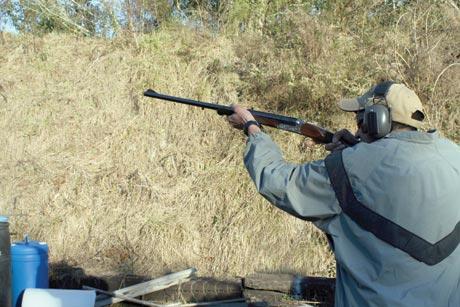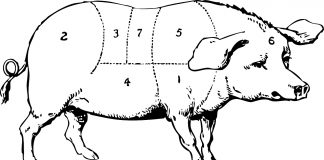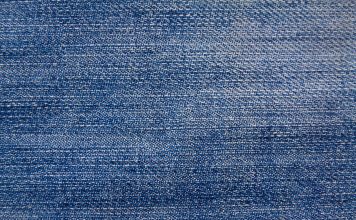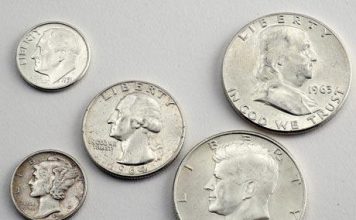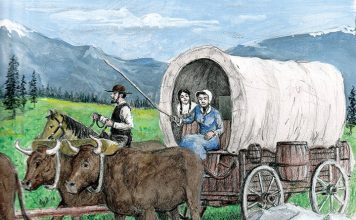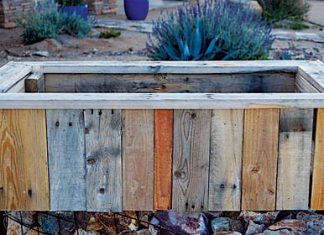 |
|
| Issue #125 • September/October, 2010 |
For you long time readers, I know what you’re thinkin’”Hey, isn’t this the guy who within the last two years wrote the article about moderation, where he said sometimes a 20-gauge shotgun will serve you better than a 12-gauge Magnum, and sometimes a .243 rifle will be a better venison-getting choice than a .300 Magnum, and sometimes a .38 revolver or 9mm pistol might just serve some people better for self-defense than a Dirty Harry Signature Model .44 Magnum?”
Um…well…yeah, I am that same guy. But there are two sides to the story of firearms power levels…
|
Shotguns
I’m perfectly comfortable reaching for a 20-gauge shotgun if I need an “all-purpose gun for around the farm.” A 20-gauge rifled slug load hits with about the power of two .44 Magnum bullets at once, and that’s ample to take down any deer within shotgun range unless that particular Bambi escaped from the set of a zombie movie. Home defense? Homicide investigation is one of the things I do for a living outside the pages of this magazine, and I can tell you with confidence that if Hubby shoots Armed Home Invader Number One with 12-gauge #4 buckshot (27 pellets, each about .24 caliber) and Wifey shoots Armed Home Invader Number Two with 20 gauge #3 buckshot (20 pellets, each about .25 caliber), they’ll strike at approximately the same velocity and tear almost identical wound channels to about the same depth. Only the Forensic Pathologist will be able to tell the difference, and then only after he has counted the little white spots the lead pellets will leave on his X-ray films, and after he has dug each projectile out and painstakingly documented it. In the flesh, the only difference will be how finely the meat was chopped in the same area of the shotgun blast strike that stopped each home invader.
When I was younger and more into hunting than time and temperament permit me now, I used the bigger 12-gauge exclusively during bird season. When I got older, I realized I could get by with something smaller that still threw enough lead. “Upland game” (pheasants and partridges, in my case) were on the menu, and so was waterfowl. Those latter ducks were harder to hit, but a full-choke shotgun that kept big lead pellets in a tight pattern would get the job done.
Then, Federal laws changed things. To keep wetland creatures from ingesting lead pellets that were fired at ducks and geese and missed and fell into the bottom beds of rivers and ponds, and to keep said wetland creatures from dying of lead poisoning, it was decreed that lead could no longer be used to shoot at waterfowl. Steel shot was the first makeshift answer, but it had less weight and therefore less penetration, and didn’t kill the birds as quickly and cleanly. Bismuth shot came next. Whole generations of new and improved birdshot were the result, but the “new” wasn’t necessarily “improved.” It became clear from the outset of the Federal law change that if the new non-lead pellets wouldn’t penetrate deeply enough to ensure clean and humane kills of the quarry, then dammit, we’d need more pellets to get the job done.
That, of course, meant bigger and more powerful shotguns and shotgun shells, in larger gauges. Suddenly, the once-moribund 10-gauge Magnum came into its own, revitalized by such guns as the Ithaca Mag-10 semiautomatic, later produced by Remington. Next came the renaissance of the 3-inch Magnum 12-gauge shell, which held more pellets than the long-time industry standard 2¾-inch 12-gauge shotshell. And then came the 3½-inch 12-gauge shell.
These are powerful loads. They kick like (forgive the cliché, please) mules. The most useful ones are heavier (absorbing more of that “kick”), and gas-operated semiautomatic in design, because such a mechanism absorbs a lot of the “comeback” inside the gun itself, before it reaches your shoulder. I own a gun called the Roadblocker, the short-barrel version of the Ithaca Mag-10. It’s one of the first Mag-10s that left the factory. It has never jammed on me, and I enjoy the heck out of it. Weighing about 10 pounds (and Magna-Ported, that is, with ports in the barrel above and behind the muzzle installed through Electronic Discharge Machining), expanding gases from the discharge are vented upward with a jet effect that holds the muzzle down to reduce the gun’s “jump up off the target” at the moment of the shot. The 10-gauge Magnum 3½-inch shell is literally two 12-gauge shotgun blasts at once: two ounces of lead leaving the barrel instead of one ounce, at the same velocity, per pull of the trigger. With Double-0 buckshot, for example, the standard 12-gauge 2¾-inch shell spits nine .33 caliber lead spheres, while the 10-gauge Magnum launches 18 of the same, at roughly the same velocity.
Do you need shotguns that big? If you’re shooting at high-flying ducks and geese and are limited to steel or bismuth or other non-lead projectiles…well, you probably do. Do you need them for anything else? That’s debatable…but damn, they’re macho to shoot!
|
Rifles
My friends who run gun shops in Florida are constantly amazed at how many hunters insist on buying .300 Winchester Magnum or 7mm Remington Magnum rifles with which to hunt deer. The average deer that gets brought to the table in the Sunshine State is about the size of a long-legged German Shepherd dog, and the typical shooting distance is less than a hundred yards. Now, I can see a .300 or 7mm Mag for a big elk in Idaho, where that power is helpful to quickly and humanely short-circuiting so large an animal.
Are you out for moose? Them critters is big, and I can certainly see using a .338 Winchester Magnum or something even bigger. Going to Africa to hunt the biggest of big game? When I went for the first time, I used .375 Holland and Holland Magnum and .458 Winchester Magnum rifles, quite literally “elephant guns.” Everything I shot with them fell down and died quickly, if I hit them right. (There was one kudu that I hit through the fatty hump above the spine with a .375 bullet, and took a day of tracking. A bullet through the brain many hours later ended the hunt. When we recovered the animal, we realized that if we’d just let it go, it probably would have healed uneventfully from the “boo-boo” through the fat lump.)
I never did go after elephant intentionally, but being in elephant territory and knowing horror stories of humans crushed to doll rags by the giant mammals, it was reassuring to have a .375 and a .458 along. I later acquired a .416 Rigby caliber Ruger Model 77 Express rifle.
Machismo value? About 9 out of 10. Practical value if you live in the “lower 48” United States and don’t have to worry about humongous bears of the Polar and Grizzly variety? Well, probably close to zero. But the ability to shoot these monstrously hard-kicking guns fast and straight? Well, in Macho Guy Terms, the value is probably incalculable.
You’ll see alongside this article my friend Justin Schortmann shooting his brother-in-law Caleb Gunter’s .470 Express double barrel elephant rifle. Watch the muzzle rise. Watch the body rock backward. I can only sayYEE-HAW!
If you aren’t in elephant country, do you need an elephant rifle? Well, heck, if you’re in a country with a 70 mile an hour speed limit, do you need a car that can race at over a hundred miles an hour? In a free country, it’s about what you want, not just what you need. Me, I kinda go with a point that Ross Seyfried first made when he was a professional hunter in Africa. I’ve owned .375, .416, and/or .458 caliber elephant rifles when I lived in New Hampshire, and when I lived in Florida.
During all that time, no elephant has ever attacked me or my neighbors. One can only conclude that there is a deterrent effect at work here. You’d think my Yuppie neighbors in the New England suburbs would have appreciated more than they did, the fact that I, alone, obviously kept herds of elephants from trampling their Volvos into their rock gardens.
|
Handguns
It is probably here, more than anywhere south of Alaska, where Macho Monster Magnum guns come into their own for practical value, if you live in the backwoods. I’ve bought and shot such hefty handguns as the .454 Casull, and the .500 Magnum and .460 Magnum revolvers from Smith & Wesson. Truth to tell, though, for outdoors use, I’m happy with the .44 Magnum. In a lifetime of shooting, I haven’t seen anything that will stand up to a 320 grain SSK bullet from a four-inch barrel Smith & Wesson .44 Mag.
There was a time in my life when as soon as deer season opened, I would get up and put on my Smith & Wesson Model 629 Mountain gun. I would take care of work in the morning, with this revolver in an Ayoob Rear Guard holster that I designed for Mitch Rosen to carry the big .44 inside the waistband. At some point in the afternoon, I would grab my “go-bag” that had hunter orange clothes, a compass, and some other stuff and head out to the woods. When I parked the Jeep, I’d trade out the 180-grain Federal carry loads (1600 feet per second velocity) and load up with 320 grain SSK hunting bullets handloaded to about 1200 foot-seconds, and hunt ’til it got dark. I still haven’t found a better combination for hunting/self-defense needs where the “hunting” part came first on the list of priorities.
My old friend and colleague Clint Smith has said that the handgun is “something you use to fight your way back to the rifle you never should have left behind.” Fact is, though, that by the time you’ve fought your way back to your rifle, your need for a firearm may be over, one way or the other. That’s why Clint himself carries a .45 caliber semiautomatic pistol or a large caliber revolver on his hip at all times. He’s a voice of experience.
All of that said, though, there’s a mystique to the super-high-power handguns. One thing we have to remember here is the “guy rules factor.” (Fellas, share this with the women in your lives. It seems to be difficult for them to understand.) The “guy rules factor” holds that the more powerful the machine and the harder it is to control, the more macho those who use it are.
|
Don’t blame me. I didn’t make these rules.
One of my favorite “fun shooting handguns” is the .50 GI, created by Alec Zimmerman. The thing throws a 300 grain bullet at about 860 feet per second. The bullet is literally a half an inch in diameter. The cartridge has a rebated rim, meaning that the case rim is smaller than the diameter of the bullet and the main body of the cartridge casing, but it seems to function remarkably well. Alec developed it originally for a 1911 pistol, but now offers a Glock conversion unit for the caliber that will fit a G21 (.45 caliber) or G20 (10mm) frame. I love watching those monster bullets blast big, heavy bowling pins back off a shooting table. I’ve killed hogs with it, but frankly found that .44 Magnum works a little quicker for that. You can find more info at www.guncrafterindustries.com.
I shoot a lot of competition in IDPA (the International Defensive Pistol Association, info and local contacts for matches near you at www.idpa.com), and I particularly enjoy the BUG (Back-Up Gun) events designed for short-barrel hide-out handguns. I’ve watched my shootin’ partner Jon Strayer complete this type of match with a snub-nose S&W .500 Magnum. It did not work out well. The muzzle blast from a 440-grain bullet going close to 1600 feet per second blew the target out of its frame before Jon could fire the next shot for score.
When I hunt with a gun instead of a camera, I usually choose a .44 Magnum revolver. Even when “Dirty Harry” called that “the most powerful handgun in the world” in that 1971 movie, the .44 Magnum had already been eclipsed by other, more powerful handgun cartridges. I figured that for my needs, though, it was enough. That changed for me a little on my second African safari in 1988, when the guide got me about 120 yards from a record book blue wildebeest. That creature has a chest that makes The Incredible Hulk look like a 98-pound weakling, and is one of the few animals that can take a lung shot and run through the thick South African bush long enough and far enough to die where you can’t find him. It would need a heart shot to take him down, and while I felt sure I could make a lung shot at 120 paces, I couldn’t guarantee a heart shot. We tried to move closer…he spooked…and I lost him.
My first order of business when I got home was to order one of the Handcannons made by my old friend J.D. Jones at SSK Industries in Ohio (www.sskindustries.com). This is a heavily-customized Thompson/Center single shot hunting pistol, chambered for the .375 JDJ cartridge, which launches a 270 grain bullet at 2000 feet per second, generating some 2400 foot-pounds of energy at the muzzle. My buddy Glenn Dubois, a sharper shooter than I, put three rounds of that ammo through that pistol into an inch and a half at 200 yards. I never did go back for the wildebeest with it…but it’s a pleasure to know I have it, and to know what it can do. No more than five shots will satisfy my Monthly Recoil Requirement, but that’s the price you pay for truly high powered firearms and ammunition.
|
Power in perspective
Backwoods Home is a general interest publication for those who celebrate self-sufficiency and rural lifestyle and values, which happens to have a gun article or two in each issue. It is not a gun magazine. With that in mind, realizing that some folks not particularly into firearms are likely to be reading this, let’s talk about power perspectives.
In rifles, a .243 Winchester (as small a caliber as I’m comfortable going with in a “deer rifle”) launches a bullet weighing 100 grains at 2960 feet per second (fps) velocity, for a calculated energy value of 1945 foot-pounds of energy (fpe) as it leaves the muzzle. The classic .30-30 Winchester cartridge is the 170 grain bullet at 2200 fps with 1827 fpe. For the all-American .30-06 cartridge, assume a 180 grain bullet at 2700 fps and 2913 fpe. Get up to a .300 Winchester Magnum and you’re looking at 2960 fps for that 180 grain bullet, and 3501 fpe. Start getting into the really big calibers, and the .375 H&H Magnum spits a 270 grain bullet at 2690 fps and 4337 fpe. The .416 Rigby can put a 410 grain bullet out the muzzle at 2370 fps for 5115 fpe, and the only animal I ever killed with a .458 Winchester Magnum (a striking Burchell’s Zebra) died instantly from a 510 grain bullet that was rated to travel at 2040 fps and generate 4712 fpe at the muzzle. The .470 Nitro Express sends forth a 500 grain projectile at 2150 fps with 5130 fpe.
In handguns, an NYPD officer’s standard issue 9mm +P service pistol ammunition will project a 124 grain slug at 1250 fps, generating 434 fpe at the muzzle. A .44 Magnum outdoorsman’s revolver with a 180 grain bullet delivers 1600 fps and generates 1023 fpe. The Smith & Wesson .500 Magnum big game revolver puts forth a 440 grain bullet at 1645 fps and packs 2644 fpe at the muzzle.
At the risk of oversimplification, I can say that the recoil will be, uh, roughly proportional to the power level.
There are times and places where you need that power. There are other times and places where you shoot the big guns simply because they’re exhilarating. They’re macho. (Or, as my self-styled “shooter-chick” girlfriend puts it, “They’re macha!”) It’s good to know that you can handle the most powerful thing in one particular corner of the world of machines.
The biggest firearms aren’t for everyday use, unless you live on Kodiak Island or on a ranch in the Eastern Transvaal. But for recreation, for excitement, for celebrating the world of the gunor just for testing your skillthe Big Boomers still have a place.


